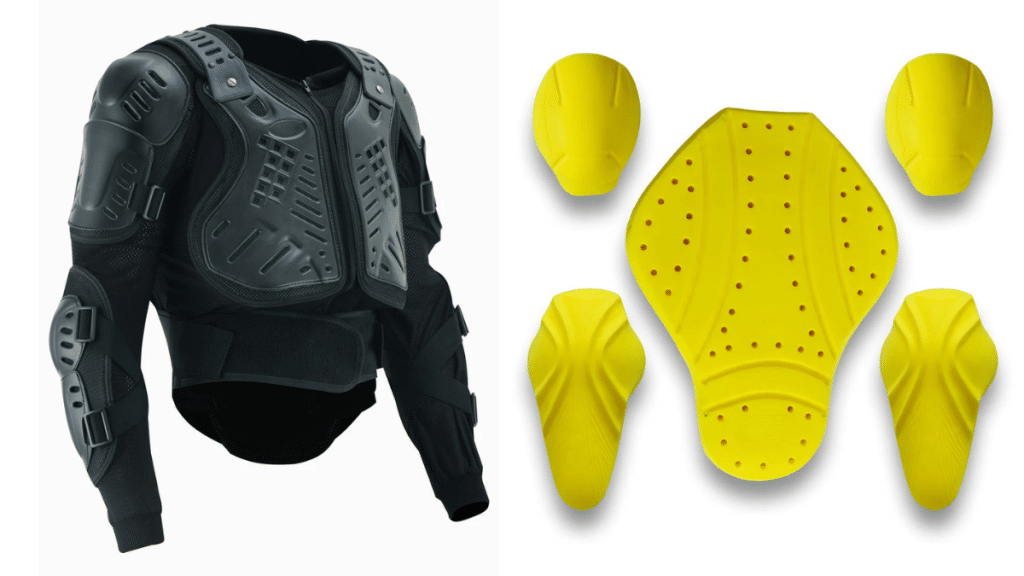Riding a motorcycle is more than just a mode of transport—it’s a lifestyle built on freedom, speed, and thrill. But with that freedom comes risk, making safety gear an essential part of every rider’s kit. When it comes to protection, many riders debate between motorcycle pads and full body armor.
Each offers its own benefits depending on riding style, environment, and comfort preferences. While pads focus on key impact zones and offer more flexibility, full-body armor provides comprehensive coverage and enhanced protection. In this post, we break down the differences to help you choose the right protective gear for your ride.
What are Motorcycle Pads?
Motorcycle pads are separate protective inserts or pieces of equipment intended to protect particular body parts of the rider. These pads, which target high-impact areas, are usually integrated into or worn with standard motorcycle apparel.
Common Types of Motorcycle Pads:
- Knee pads: Protect the knees in the event of an accident or fall.
- Elbow pads: Protect your elbows with elbow pads, especially when sliding at a slow speed.
- Shoulder pads: Protect the shoulder joints with shoulder pads.
- Hip pads: In order to protect the hips, riding pants frequently have hip pads.
In contrast to full body armor, they tend to consist of impact-absorbing materials like foam, D3O, or hard plastic shells and are worn by riders who want greater flexibility, airflow, or lighter equipment.
What is Motorcycle Armor?
Motorcycle full body armor, also referred to as body armor, is protective gear worn on the limbs, back, and chest to lessen the chance of riders being hurt in an accident.
Motorcycle armor reduces the chance of getting hurt in collisions while riding on the road, track, or trail. Impact protection armor can make the difference between minor abrasions and bruises and serious injuries.
Motorcycle armor impact protection comes in two CE levels: Level 1 and Level 2.
- Level 1 offers a decent level of protection. Riders who commute, ride recreationally, or who otherwise desire more lightweight, flexible, and thin armor are more likely to wear it. Motorcycle apparel, like jackets and pants, frequently comes with Level 1 as standard.
- Level 2, on the other hand, offers a higher level of protection. It is usually purchased separately and isn’t often integrated into motorcycle clothing. Usually, riders will upgrade some important components of their Level 1 armor to Level 2, like shoulder, knee, elbow, or back pads.
Comparison Table: Motorcycle Pads vs. Full Body Armor
| Feature | Motorcycle Pads | Full Body Armor |
| Coverage | Partial (elbows, knees, shoulders) | Complete (chest, back, spine, limbs) |
| Protection Level | Moderate | High |
| Comfort & Flexibility | More breathable and lightweight | Heavier, can restrict movement slightly |
| Ideal For | Casual riders, city commutes | High-speed riding, off-road, track use |
| Cost | Generally more affordable | Higher price due to full-body protection |
Does Motorcycle Protective Gear Work?
Although riding a motorcycle is a lot of fun and offers you an unparalleled sense of freedom, there is a risk involved. Despite making up only 3.4% of all vehicles on the road, motorcycle riders are responsible for 15% of all crash-related fatalities in the United States.
So, do the armor or pads protect?
In short, yes.
Final Words:
Choosing between motorcycle pads and full body armor comes down to your riding style, comfort needs, and safety priorities. Motorcycle pads offer targeted protection with more flexibility and airflow, ideal for daily commuting and casual rides.
In contrast, full body armor provides superior coverage and is better suited for high-speed or off-road conditions where maximum protection is essential. Regardless of your choice, investing in quality protective gear significantly reduces the risk of injury.
Stay safe, ride smart, and gear up with what suits you best—because when it comes to riding, protection is never optional.
